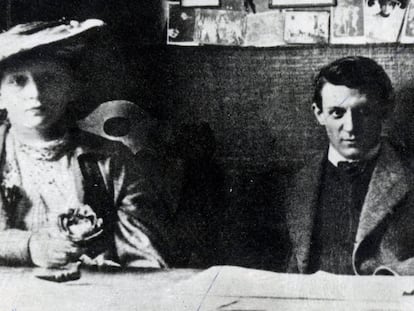Ruins, revenge and abandonment in the mansion that belonged to Andy Warhol’s gallerist
The residence that belonged to Alexander Iolas — the Greek-American gallerist who discovered Andy Warhol — was looted and vandalized after his death in 1987. However, as with all martyrdom sites, it has become a temple that still attracts devotees of contemporary art
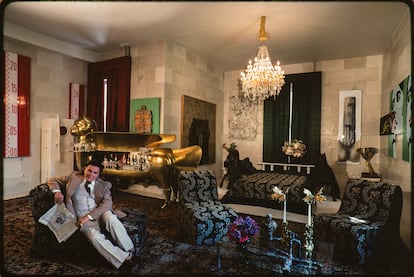
She called herself Maria Callas. And, like the Greek mythological character Medea, she unleashed a tragedy with her revenge.
It happened in 1985. Gallery owner Alexander Iolas fired Kallas for theft. He had employed the trans woman as an assistant in his Athenian mansion. After she was dismissed, Callas began to accuse him of drug trafficking, pedophilia and antiquities smuggling. In the tabloid press, she declared that the gallerist held “Roman orgies” at the property. The chorus of editorials declared: “Iolas is rotten.” The hatred that these newspapers generated for the man was such that, when Iolas died just two years later, the anger didn’t completely disappear. It was instead directed at his famous art collection.
Unprotected by the authorities, the gallerist’s residence — on the outskirts of Athens — was looted and vandalized. One day, intruders set fire to one of his Egyptian antiquities. On another occasion, they torched his catalogs. The mansion was sprayed with graffiti; the furniture was chopped up. However, despite all of this — as with all martyrdom sites — over time, the Villa Iolas (as it began to be called) also attracted some devotees.
“I visited [the house] a few years ago and found Iolas’ phone book. He had written down the numbers of [Marcel] Duchamp, of Peggy Guggenheim in Venice, of [René] Magritte... he was a fascinating man,” says Greek artist Andreas Angelidakis by email. The clandestine visit inspired several of his works.
“Iolas’ house was an avant-garde mecca in a Greece [that was] full of mediocrity and homophobia,” says fellow Greek artist Angelo Plessas, when talking about his own visit. “I was a child, but I remember very well the harshness of the attacks and slander from the press that led to his [fall from grace].”
The decline of Iolas’ mansion became a symbol of his collapse. However, before the final years of his life, it was a symbol of his greatness. Eleni Coutsoudis — the niece and heir of the gallery owner — explains in the documentary Villa Iolas (2017) that it was Iolas’s father, an Egyptian cotton merchant, who began building the house in the Agia Paraskevi area, northwest Athens, in 1950. By then, the name of Alexander Iolas was already well-known in the art world. Like the Macedonian king who inspired him, he went through numerous journeys.
Born in Alexandria in 1908, Iolas was named Constantine Coutsoudis by his parents. When he was a teenager, he became friends with Constantino Cavafis, the great poet of the Egyptian city. It was he who encouraged Constantine to move to Athens, a place where — encouraged this time by the prestigious conductor Dimitris Mitropoulos — he learned piano and took his first steps as a dancer.
In 1930, he left Greece to study dance at Tatiana and Victor Gsovsky’s school in Berlin. But the rise of the Nazis — and the beating he claimed to have received from a group of them — made him go to Paris. There, his famous encounter with a painting by the Italian artist Giorgio de Chirico took place. “I had never seen a modern painting,” Iolas recalled. “The frequent visits I made there [planted the seeds] of my desire to be a gallery owner.”
In 1935, his ambitions followed him to New York City, where — with his new name and a decade under his belt with ballet companies — he left dance and began directing the Hugo Gallery, which was sponsored by the aristocrat Maria dei Principi Ruspoli (who was married to a great-grandson of Victor Hugo). This is where Iolas’ commitment to surrealism saw him display important collections, such as one provided by the famous De Menil family in Houston. Iolas exhibited artists such as Magritte, Max Ernst and Leonor Fini. And, in 1952, he saw Andy Warhol’s depictions of Truman Capote. With these drawings, he put together the artist’s first exhibition. Iolas discovered Warhol: the two men shared a taste for the marginal and the bizarre.
“Andy adored Iolas,” writer Bob Colacello recalls, in his memoirs about his years working with Warhol at Interview magazine. “With his extravagant turquoise and emerald satin suits, and matching upholstered platform shoes, he passed for one of [Warhol’s models].”
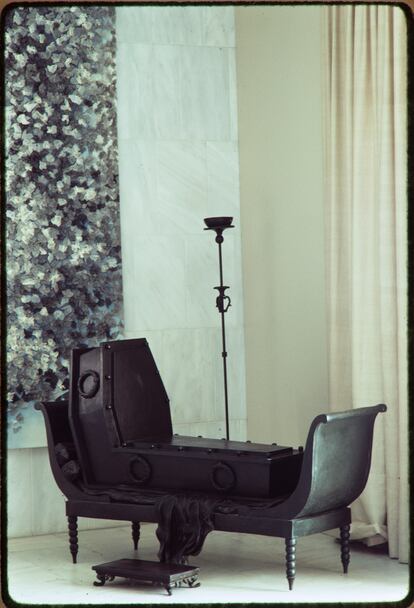
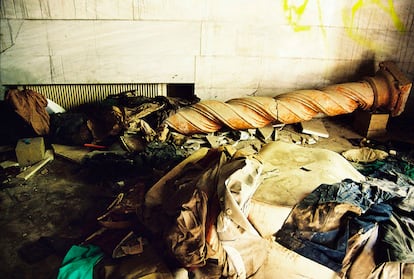


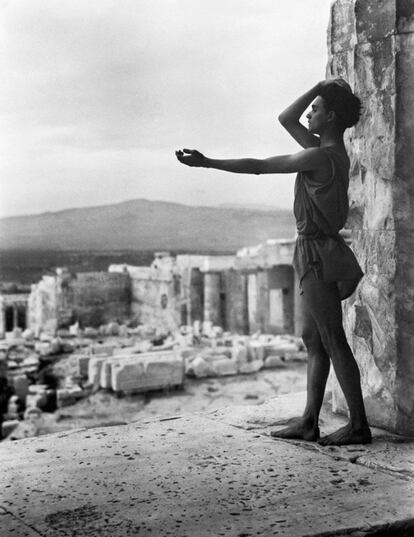
The golden age came in the 1960s, with the expansion of the Iolas Gallery. Now the owner, he began to expand to a variety of locations around the world. He opened galleries in Paris, Milan, Geneva, Madrid, as well as in Athens, where he returned every summer. As his success grew, his mansion was transformed. And he didn’t simply add a second floor in 1971, or expand the surface area to 35 times its original size. Behind the engraved bronze gates of the house (believed to have been designed in part by Dimitri Pikionis, the architect of the modern touches to the Acropolis) a myriad of works of art and antiquities — unparalleled in Greece — filled the various marble rooms. A visit to Iolas’ kitchen became a masterclass in art. From a room dedicated to Ancient Greece, one moved to another filled with works from the Byzantine period, or to one displaying paintings by Picasso.
As a consequence of the death of Max Ernst in 1976, Iolas closed his galleries. He had promised the artist that, when he was gone, he would retire permanently in Athens. However, as Eleni Coutsoudis explains, her uncle didn’t know how to be idle. So, he began to run the mansion as if it were a new gallery, filling it with works by Warhol, Niki de Saint-Phalle and other artists he had worked with. “I was tired of paying $700,000 in storage costs,” Iolas joked in 1981, downplaying the presence of the various pieces in his house. But the excuse fell short when he invited artists such as Marina Karella to create new works there, or when he designed surprising spaces like his bathroom, covered by a gold ceiling. “The house was the best gallery of all the ones he ran,” his niece sighs.
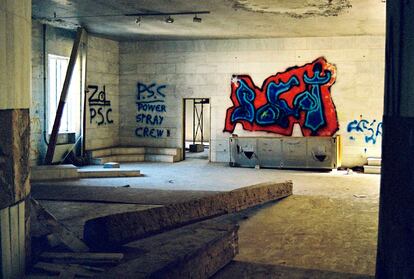
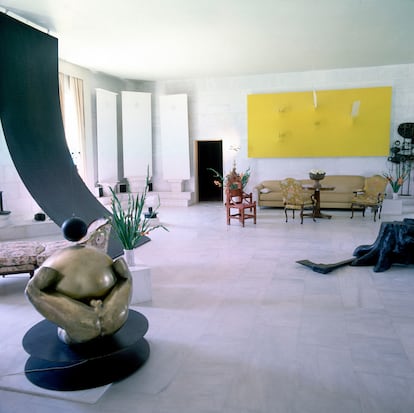
Iolas’s big mistake was to open the doors of this avant-garde kingdom to the Greek public, through an interview given in his home in 1983. He boldly stated his opinions about his country’s society and, in particular, about president Georgios Papandreou’s rise to power. The government in Athens wasn’t amused. He was made to feel uncomfortable within Greece. And, two years later, his former employee Maria Callas threw a match on the bonfire.
Alexander Iolas died of complications from AIDS in a New York hospital on June 8, 1987. Supposedly, he wished that his house would become a museum that would help redeem his name in Greece. His niece denies this.
“My uncle didn’t care what happened to the house. He used to quote Louis XV: ‘After me, the flood.’” Be that as it may, the theft of hundreds of works of art during the looting of the house — along with attacks by vandals — made such a museum impossible. Much of the blame for its neglect lies with the municipal authorities of Agia Paraskevi. The local government has owned the property since 2013.
“That the house remains in ruins shows how — even in today’s Greece — Iolas is still marginalized,” laments George Vamvakidis by phone. He is the co-founder and director of the Breeder Gallery in Athens. “For the new generations of Greek artists — and especially for those who are queer — what happened to the house not only represents the lost opportunity to see his collection, but, on a symbolic level, to have [lost] a place where they could feel heard, seen and celebrated.”
But perhaps the mansion isn’t the place where young artists should honor Iolas. At the Andy Warhol Museum in Pittsburgh, you can visit some works from the series that — in 1984, perhaps foreseeing how the traitors would come for him — Iolas commissioned his friend to create: the pop art version of Leonardo da Vinci’s The Last Supper.
Sign up for our weekly newsletter to get more English-language news coverage from EL PAÍS USA Edition
Tu suscripción se está usando en otro dispositivo
¿Quieres añadir otro usuario a tu suscripción?
Si continúas leyendo en este dispositivo, no se podrá leer en el otro.
FlechaTu suscripción se está usando en otro dispositivo y solo puedes acceder a EL PAÍS desde un dispositivo a la vez.
Si quieres compartir tu cuenta, cambia tu suscripción a la modalidad Premium, así podrás añadir otro usuario. Cada uno accederá con su propia cuenta de email, lo que os permitirá personalizar vuestra experiencia en EL PAÍS.
¿Tienes una suscripción de empresa? Accede aquí para contratar más cuentas.
En el caso de no saber quién está usando tu cuenta, te recomendamos cambiar tu contraseña aquí.
Si decides continuar compartiendo tu cuenta, este mensaje se mostrará en tu dispositivo y en el de la otra persona que está usando tu cuenta de forma indefinida, afectando a tu experiencia de lectura. Puedes consultar aquí los términos y condiciones de la suscripción digital.
More information
Archived In
Últimas noticias
Most viewed
- Sinaloa Cartel war is taking its toll on Los Chapitos
- Oona Chaplin: ‘I told James Cameron that I was living in a treehouse and starting a permaculture project with a friend’
- Reinhard Genzel, Nobel laureate in physics: ‘One-minute videos will never give you the truth’
- Why the price of coffee has skyrocketed: from Brazilian plantations to specialty coffee houses
- Silver prices are going crazy: This is what’s fueling the rally
